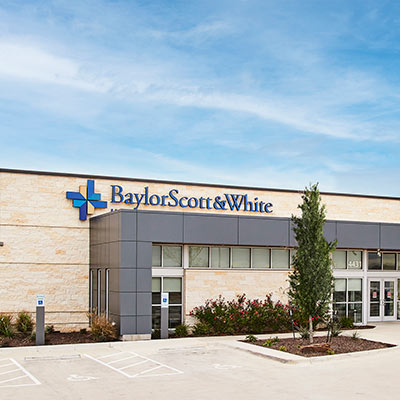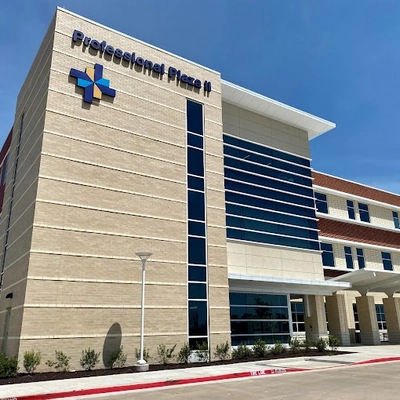What is an echocardiogram?
An echocardiogram (an echo) is a noninvasive diagnostic test that can offer valuable information about the structure and function of your heart, including the sizes of different chambers, its ability to pump blood and the competency of your heart valves.
Also referred to as a diagnostic cardiac ultrasound, this test uses high-frequency sound waves and special computer technology that allows your doctor to take pictures of your heart’s structure, including its size, shape and movements.
Why would I need an echocardiogram?
Providers use echocardiography to investigate symptoms and identify many heart and vascular conditions, including:
- Atherosclerosis
- Aortic aneurysm
- Angina (chest pain)
- Arrhythmia
- Cardiomyopathy
- Congenital heart disease
- Congestive heart failure
- Coronary artery disease
- Heart attack
- Heart valve disease, such as aortic stenosis and mitral valve regurgitation
- Pericarditis
- Pericardial effusion
- Stroke
How is an echocardiogram done?
There are a few different types of echocardiograms, but they all use sound waves to produce images. During the test, an ultrasound wand or probe sends sound waves to your heart that “echo” back to a computer monitor. The monitor uses those sound waves to create pictures of the heart and valves.
Some echo tests use Doppler technology to show the direction and speed of blood flow and help doctors identify problems with your heart valves.
How long does an echocardiogram take?
An echocardiogram usually takes 30 to 60 minutes. It may take longer if other imaging tests are required.
Types of echocardiograms
Transthoracic echocardiogram (TTE)
Transthoracic echocardiogram (TTE) is the most common type of echo test. A sonographer passes an ultrasound wand over your chest to create images of your heart while you lie on an exam table.
Transesophageal echocardiogram (TEE)
The second most common type of echo test, Transesophageal echocardiogram (TEE) involves placing an ultrasound-equipped probe inside your esophagus to view your heart valves and chambers. It also identifies blood clots and infections. You may need a TEE echo if a transthoracic echocardiogram doesn’t provide a clear diagnosis.
Stress echocardiogram
An exercise stress echocardiogram combines echocardiography, which isn’t usually used during a standard heart stress test , with electrocardiography (ECG) , blood pressure monitoring and exercise. Sometimes simply called a stress echo, the test measures the effects of physical activity on your heart. It can detect abnormal blood flow to the heart muscle and changes to heart rhythms. Your doctor may also use it to confirm damage from a heart attack.
Pharmaceutical stress echocardiography
Instead of exercise, this stress echo uses medications to increase heart rate and test the heart’s ability to pump blood. Your doctor might recommend this stress echo if you can’t carry out the level of exercise necessary to increase your heart rate for an exercise stress echocardiogram.
What to expect during an echocardiogram
-
Transthoracic echocardiogram (TTE)
Preparing for a transthoracic echo
Unless you are having an exercise stress echo, you won’t need to refrain from eating or drinking before the test. You will, however, want to wear loose-fitting clothing. Some echo tests require you to remove your clothing from the waist up and wear a hospital gown.
If you had a previous echo test, be sure your doctor has those results before you have your test.
During a transthoracic echo
- You will lie on an exam table, and a sonographer will spread gel over your chest. This gel helps sound waves pass through your skin.
- The sonographer might ask you to hold your breath briefly to get more accurate readings.
- For some echo tests, such as the Doppler, the probe makes a whirring, mechanical sound. This noise comes from the flow of blood within the chambers of the heart. You may be able to see the images of your heart during the test.
- After the test, the sonographer will clean the gel from your chest and there is no further restriction of any kind of activity thereafter.
-
Transesophageal echocardiogram (TEE)
Preparing for a transesophageal echo
Because a TEE requires going inside the body to get closer to the heart, this echo test requires different preparation. You will receive a sedative to help you relax during the test, so your care team will provide you with instructions about when to stop eating and drinking before the test and whether you should make any changes to how you take your medications on the day of the test.
Wear comfortable clothing, as you will need to remove everything from the waist up. Also, have someone available to drive you home afterward.
During a transesophageal echo
- Just before the test, your sonographer will give you a numbing agent for your throat and give you a sedative. You’ll lie down on an exam table.
- Once you’re relaxed, your physician (or cardiologist) will gently slide the ultrasound probe down your throat and into your esophagus. The probe will use sound waves to create images, as with other echo tests.
- The cardiologist gently removes the probe when the test is done. Once the sedative has worn off, you’ll be able to go home.
-
Preparing for a stress echo
Stress echoes also require more preparation than a TTE. Your team will give you specific instructions about changes to your diet and medications in the days and hours leading up to your echo test. In general, you will need to avoid eating and drinking for a few hours beforehand. You will also need to avoid caffeine and smoking for up to 24 hours before the exam. If you’re having an exercise stress echo, plan to wear comfortable clothing that you can move in easily. You may need to walk on a treadmill or ride an exercise bike, so opt for loose clothing and comfortable athletic shoes.
During a stress echo
A stress echo functions very similarly to an exercise stress test. You will have electrodes placed on your chest to measure your heart’s activity, and you’ll wear a blood pressure cuff throughout the test. However, just before the test, your sonographer will ask you to lie on an exam table so they can perform an echocardiogram before you begin exercising. If you’re having an exercise stress echo, you’ll complete the exercise portion of your test and then have another echocardiogram. If you’re having a pharmaceutical stress echo, you’ll receive medication to stress your heart and then have a second echocardiogram.
Echocardiogram results
After the test, the sonographer will send the results to your referring physician, who will review the results. Your physician may want to schedule a follow-up visit to discuss them.
If an echo test confirms a diagnosis, your treatment options will depend on the specific condition and the severity of your symptoms. In other cases, an echo test might not be enough to make an accurate diagnosis. Your doctor may recommend other tests to diagnose your condition, such as electrophysiology, a procedure called coronary catheterization or specialized imaging, such as CT or MRI scans.
Find a location near you
You can have your echocardiogram at Baylor Scott & White’s specialized echocardiography labs, which are equipped with advanced diagnostic imaging tools to help ensure an accurate diagnosis. We can help you arrange follow-up care or additional cardiac services at our many heart and vascular locations in North and Central Texas.

Baylor Scott & White Cardiology Consultants of Texas - Dallas
621 N Hall St Ste 500, Dallas, TX, 75226- Monday: 8:00 am - 5:00 pm
- Tuesday: 8:00 am - 5:00 pm
- Wednesday: 8:00 am - 5:00 pm
- Thursday: 8:00 am - 5:00 pm
- Friday: 8:00 am - 5:00 pm
- Monday: 8:30 am - 4:30 pm
- Tuesday: 8:30 am - 4:30 pm
- Wednesday: 8:30 am - 4:30 pm
- Thursday: 8:30 am - 4:30 pm

Baylor Scott & White Cardiology Consultants of Texas - Greenville
4400 Interstate 30 W Ste 300, Greenville, TX, 75402- Monday: 8:30 am - 5:00 pm
- Tuesday: 8:30 am - 5:00 pm
- Wednesday: 8:30 am - 5:00 pm
- Thursday: 8:30 am - 5:00 pm
- Friday: 8:30 am - 5:00 pm

Baylor Scott & White Cardiology Consultants of Texas - Mesquite
1575 Interstate 30 , Mesquite, TX, 75150- Monday: 8:30 am - 5:00 pm
- Tuesday: 8:30 am - 5:00 pm
- Wednesday: 8:30 am - 5:00 pm
- Thursday: 8:30 am - 5:00 pm
- Friday: 8:30 am - 5:00 pm

Baylor Scott & White Cardiology Consultants of Texas - Midway
4431 E US Hwy 287 , Midlothian, TX, 76065- Monday: 8:00 am - 5:00 pm
- Tuesday: 8:00 am - 5:00 pm
- Wednesday: 8:00 am - 5:00 pm
- Thursday: 8:00 am - 5:00 pm
- Friday: 8:00 am - 5:00 pm

Baylor Scott & White Cardiology Consultants of Texas - Park Cities
9101 N Central Expy Ste 300C, Dallas, TX, 75231- Monday: 8:30 am - 5:00 pm
- Tuesday: 8:30 am - 5:00 pm
- Wednesday: 8:30 am - 5:00 pm
- Thursday: 8:30 am - 5:00 pm
- Friday: 8:30 am - 5:00 pm

Baylor Scott & White Cardiology Consultants of Texas - Red Oak
301 E Ovilla Rd Ste 100, Red Oak, TX, 75154- Monday: 8:00 am - 5:00 pm
- Tuesday: 8:00 am - 5:00 pm
- Wednesday: 8:00 am - 5:00 pm
- Thursday: 8:00 am - 5:00 pm
- Friday: 8:00 am - 5:00 pm

Baylor Scott & White Cardiology Consultants of Texas - Waxahachie
2360 N Interstate 35E Ste 110, Waxahachie, TX, 75165- Monday: 8:00 am - 5:00 pm
- Tuesday: 8:00 am - 5:00 pm
- Wednesday: 8:00 am - 5:00 pm
- Thursday: 8:00 am - 5:00 pm
- Friday: 8:00 am - 5:00 pm

Baylor Scott & White Cardiovascular Associates - Fort Worth
1307 8th Ave Ste 406, Fort Worth, TX, 76104- Monday: 8:00 am - 4:30 pm
- Tuesday: 8:00 am - 4:30 pm
- Wednesday: 8:00 am - 4:30 pm
- Thursday: 8:00 am - 4:30 pm
- Friday: 8:00 am - 4:30 pm

Baylor Scott & White Cardiovascular Specialists - Mesquite
5308 N Galloway Ave Ste 201, Mesquite, TX, 75150- Monday: 8:00 am - 5:00 pm
- Tuesday: 8:00 am - 5:00 pm
- Wednesday: 8:00 am - 5:00 pm
- Thursday: 8:00 am - 5:00 pm
- Friday: 8:00 am - 5:00 pm

Baylor Scott & White Cardiovascular Specialists - Rockwall
6705 Heritage Pkwy Ste 202, Rockwall, TX, 75087- Monday: 8:00 am - 5:00 pm
- Tuesday: 8:00 am - 5:00 pm
- Wednesday: 8:00 am - 5:00 pm
- Thursday: 8:00 am - 5:00 pm
- Friday: 8:00 am - 5:00 pm

Baylor Scott & White Denton Heart Group
3333 Colorado Blvd , Denton, TX, 76210- Monday: 8:00 am - 5:00 pm
- Tuesday: 8:00 am - 5:00 pm
- Wednesday: 8:00 am - 5:00 pm
- Thursday: 8:00 am - 5:00 pm
- Friday: 8:00 am - 5:00 pm

Baylor Scott & White Denton Heart Group - Gainesville
201 N Interstate 35 Ste 140, Gainesville, TX, 76240- Monday: 8:00 am - 5:00 pm
- Tuesday: 8:00 am - 5:00 pm
- Wednesday: 8:00 am - 5:00 pm
- Thursday: 8:00 am - 5:00 pm
- Friday: 8:00 am - 5:00 pm

Baylor Scott & White Texas Cardiac Associates - Forney
763 E US Hwy 80 Ste 240, Forney, TX, 75126- Monday: 8:00 am - 5:00 pm
- Tuesday: 8:00 am - 5:00 pm
- Wednesday: 8:00 am - 5:00 pm
- Thursday: 8:00 am - 5:00 pm
- Friday: 8:00 am - 5:00 pm

Baylor Scott & White Texas Cardiac Associates - Rowlett
7801 Lakeview Pkwy Ste 100, Rowlett, TX, 75088- Monday: 8:00 am - 5:00 pm
- Tuesday: 8:00 am - 5:00 pm
- Wednesday: 8:00 am - 5:00 pm
- Thursday: 8:00 am - 5:00 pm
- Friday: 8:00 am - 5:00 pm

Baylor Scott & White Texas Cardiac Associates - Royse City
6257 FM 2642 Blvd Ste 100, Royse City, TX, 75189
Baylor Scott & White The Heart Hospital - Plano Outpatient Cardiac Imaging
4716 Alliance Blvd Pavilion II, Ste 300, Plano, TX, 75093- Monday: 8:00 am - 5:00 pm
- Tuesday: 8:00 am - 5:00 pm
- Wednesday: 8:00 am - 5:00 pm
- Thursday: 8:00 am - 5:00 pm
- Friday: 8:00 am - 5:00 pm